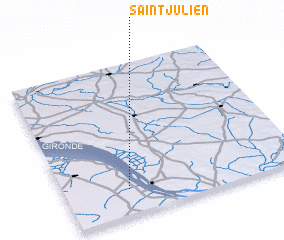| |
Saint
Julien |
|
| |
The small
commune of Saint Julien encompasses about 2,200 acres (900
hectares) of land. Saint Estephe and Pauillac are Saint Julien's
neighbors to the north. It is part of the Medoc,
an area that lies on the left bank of the Gironde
estuary in Bordeaux
|
 |
|
| |
In Saint
Julien, the dominant grape variety is Cabernet
Sauvignon. The wines that come from this area are known
for their ability to age and develop for a decade or more.
|
|
| |
The chateaux
of Saint Julien were considered in the Classification
of 1855. While there were no First Growths awarded
to any of the chateaux in the commune, five chateaux earned Second
Growth status along with two Third Growths and four Fourth growths.
|
|
| |
|
| |
Soil in
the region is composed of fine gravel and clay. This type of soil
provides very good drainage which stresses grape vines and causes
the roots to grow very deep.
|
|
| |
As a general
comment on style, look for the wines of Saint Julien to have a
little less power than the wines of Pauillac and less coarseness
than the wines of Saint Estephe. Many of the wines from Saint
Julien exhibit a style that is a bit more 'fruit forward' than
their local cousins.
|
|
| |
|
| |
Second
Great Growths
|
|
| |
Château
Ducru-Beaucaillou (Saint-Julien)
|
|
| |
Château
Léoville-Barton (Saint-Julien)
|
|
| |
Château
Léoville-Las-Cases (Saint-Julien)
|
|
| |
Château
Léoville-Poyferré (Saint-Julien)
|
|
| |
Château
Gruaud-Larose (Saint-Julien)
|
|
| |
|
|
| |
Third
Great Growths
|
|
| |
Château
Lagrange (Saint-Julien)
|
|
| |
Château
Langoa-Barton (Saint-Julien)
|
|
| |
|
|
| |
Fourth
Great Growths
|
|
| |
Château
Beychevelle (Saint-Julien)
|
|
| |
Château
Branaire-Ducru (Saint-Julien)
|
|
| |
Château
Saint-Pierre (Saint-Julien)
|
|
| |
Château
Talbot (Saint-Julien)
|
|
